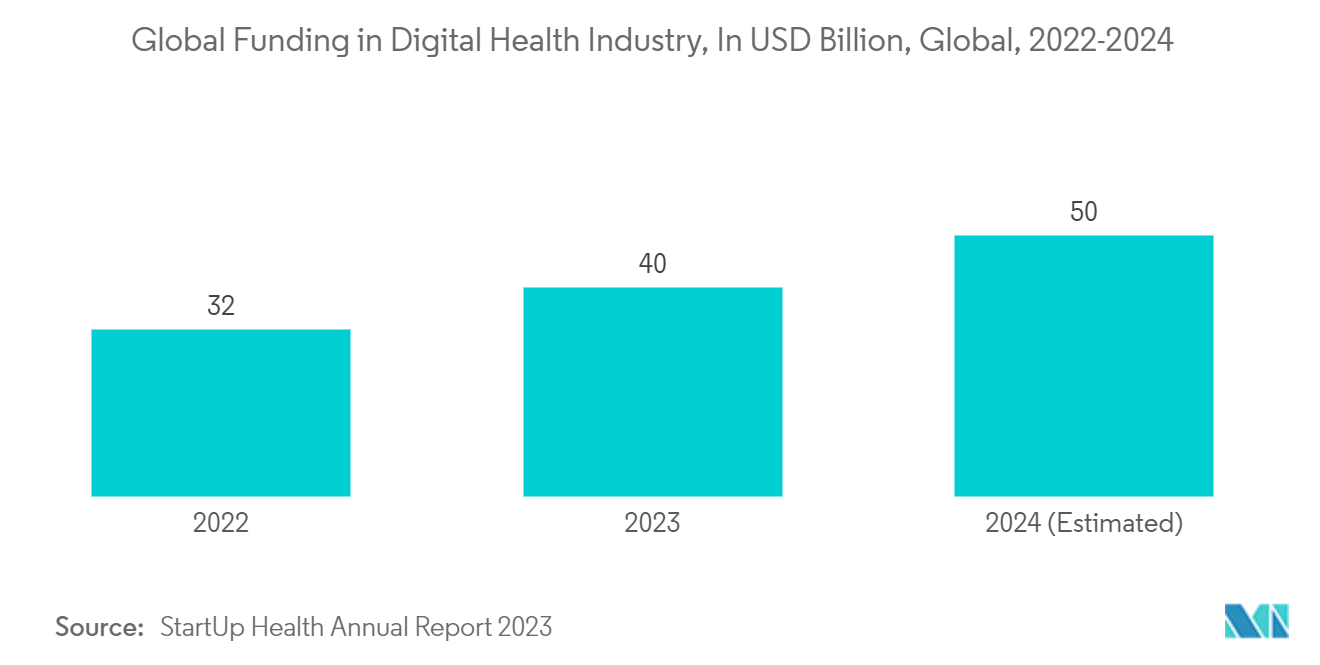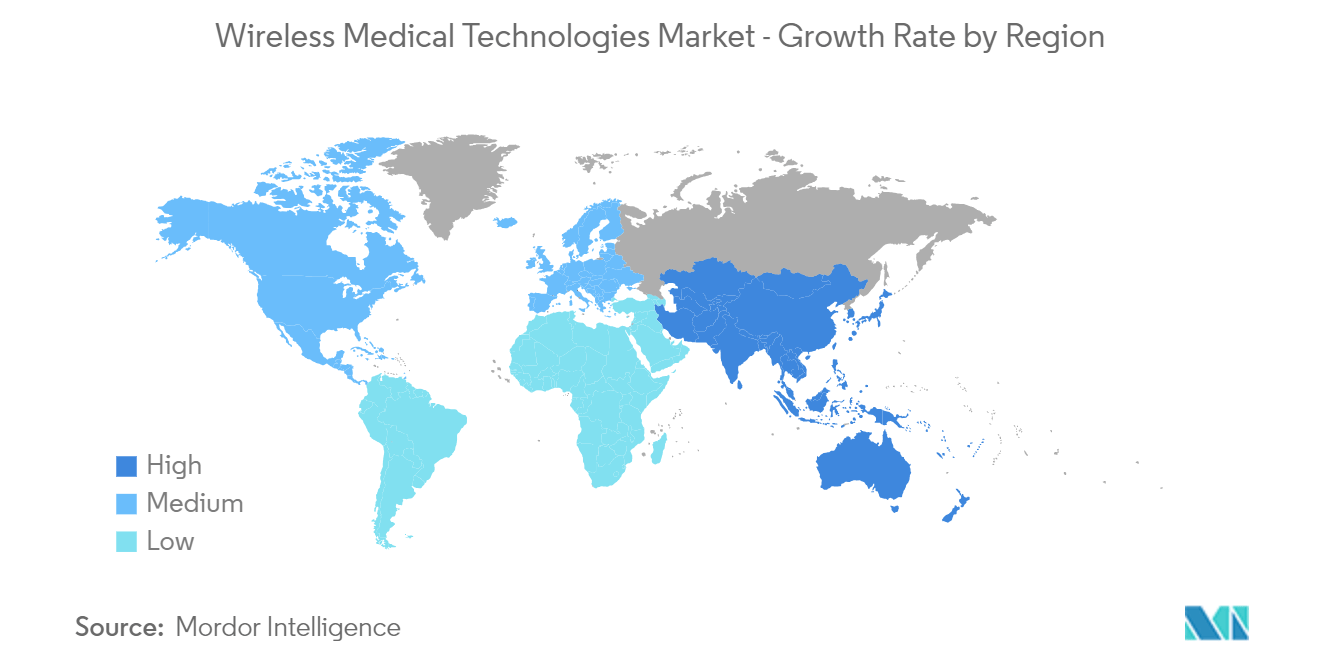Market Trends of Wireless Medical Technologies Industry
The Wireless Body Area Network (WBAN) Segment is Expected to Hold Significant Market Share Over the Forecast Period
A body area network (BAN), also referred to as a body sensor network (BSN) or a wireless body area network (WBAN), is a wireless network of wearable computing devices. A wireless body area network system can utilize WPANs (wireless personal area networks) as gateways to reach longer ranges. Through these gateway devices, it is feasible to connect the wearable devices on the human body to the internet. This way, medical experts can access patients' data online using the internet, independent of their location.
The increasing adoption of WBAN in healthcare and the rising number of chronic diseases are expected to drive the revenue of the segment over the forecast period. According to an article published in Sensors in December 2023, electronic healthcare (E-healthcare) revolutionized the healthcare system, WBANs being an integral part of it. The patient’s personal data can be accessed remotely in real-time from any location by using e-healthcare technology. Furthermore, according to an article published in Scientific Reports in February 2024, in the healthcare industry, while using WBAN technologies, a collection of physical and biological sensors is distributed on the patient's body to monitor health status, biological and physical activities, physiological measurements, or any other objectives.
WBAN helps in monitoring vital parameters like heart rate, ECG, and blood pressure. According to the report published by the British Heart Foundation (BHF) in April 2024, more than 7.6 million people were living with heart and circulatory diseases in the United Kingdom in 2022, which is further projected to increase with the aging population, decreasing fertility rates, and increasing survivability from other chronic diseases. Furthermore, as per the 2022 update from the International Diabetic Federation (IDF), about 537 million adults (20-79 years) were diagnosed with diabetes. The total number of people living with diabetes is projected to rise to 643 million by 2030 and 783 million by 2045.
Thus, the increasing adoption of WBAN in healthcare and rising chronic diseases are expected to drive the growth of the segment over the forecast period.

North America is Expected to Hold a Significant Share in the Market Studied
North America is expected to hold a significant share in the market studied over the forecast period owing to factors such as the increasing adoption of digital health and rising advancements in wireless medical technologies.
According to the Canadian Digital Health Survey of April 2024, around 83% of the studied population was interested in sending prescriptions directly to the pharmacy through the patient portal, and around 59% of the population was interested in teleconsultation. Hence, the rising interest in digital-enabled health services is expected to increase the adoption of wireless medical technologies to share important medical data.
In June 2022, GE Healthcare launched Portrait Mobile, a wireless patient monitoring system that continuously monitors a patient's stay. The wireless patient monitoring system helps clinicians detect patient deterioration. Portrait Mobile includes patient-worn wireless sensors that communicate with a mobile monitor. Similarly, in January 2022, North Carolina-headquartered Novant Health, a three-state integrated network of physician clinics, outpatient centers, and hospitals, reported the deployment of Extreme Networks' enterprise-grade Wi-Fi 6E solution. The Extreme AP4000 access point (AP) investment will enable the hospital to provide high-speed Wi-Fi throughout its facilities and allow dedicated, secure connectivity for mission-critical healthcare apps and medical devices.
Thus, the increasing adoption of digital health and the rising advancement in wireless medical technologies in North America are expected to drive the growth of the market over the forecast period.


